How does the chiral structures of single-wall carbon nanotubes affect their transport electrical properties?
Published in Physics
Single-wall carbon nanotubes (SWCNTs) have emerged as prospective candidates for next-generation electronic and optoelectronic integrated circuits (ICs) due to their extremely high carrier mobility and current-carrying capacity [1]. The performance of electronic devices based on either a single SWCNT or aligned array films has been reported to exceed that of silicon-based devices with the same gate length [2]. Notably, the band structure of a SWCNT is determined by its chiral structure (diameter and chiral angle), meaning that SWCNTs have structure-tunable electrical properties [1, 3]. Therefore, clarifying how the chiral structure of SWCNTs affect their electrical properties is critical for the design of high-performance carbon-based electronic and optoelectronic devices. In the past, the electrical transport properties of SWCNTs with different diameters have been measured based on single-SWCNT field-effect transistors [4], showing that the SWCNTs exhibit higher on-state saturation current and carrier mobility with increasing diameter. However, the effect of chiral angle is still unknown.
In our most recent article in Nature Communications, we discover the relationship between the electrical transport properties of SWCNTs and their chiral structures by experimental measurements.
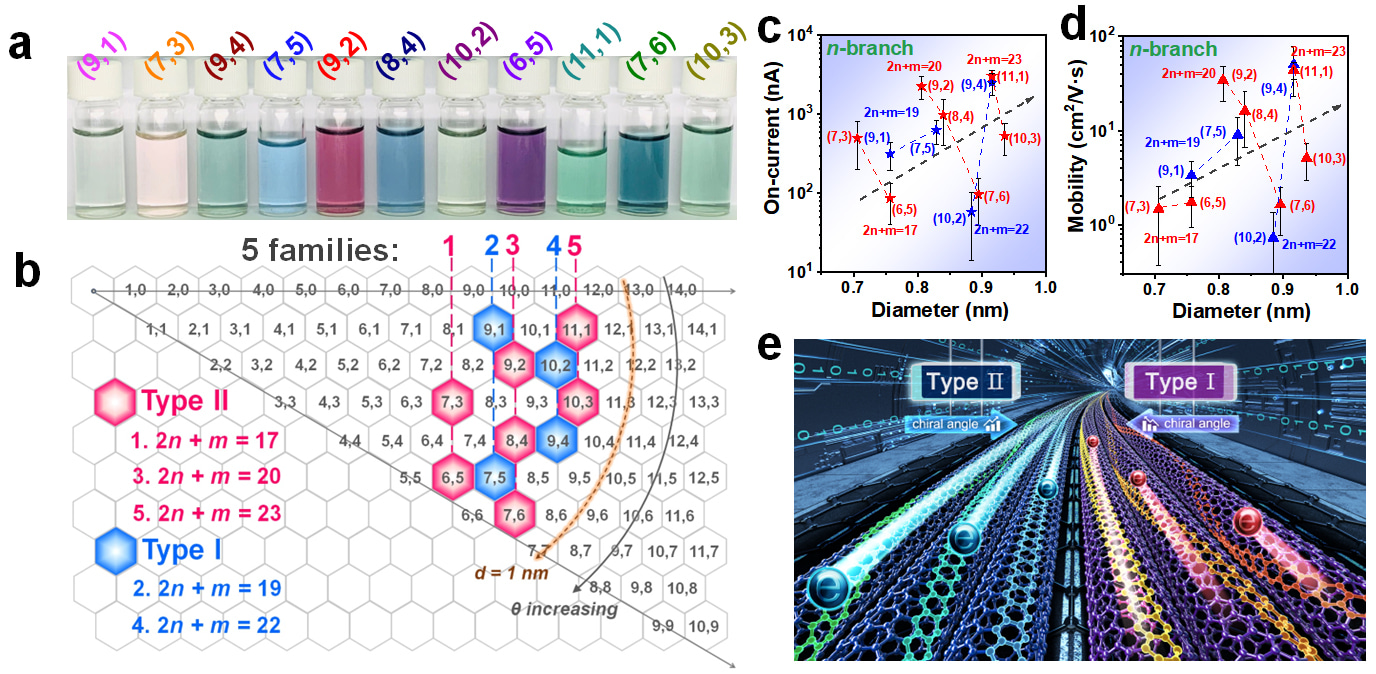
We employed eleven kinds of single-chirality species separated by gel chromatography [5], including (6, 5), (7, 3), (7, 5), (7, 6), (8, 4), (9, 1), (9, 2), (9, 4), (10, 2), (10, 3) and (11, 1), to fabricate thin film transistors (TFTs), and measured their electrical transport properties. These single-chirality SWCNTs contain Type I ((mod (2n + m, 3) = 1) and Type II (mod (2n + m, 3) = 2) and five different families (2n+m= constant). The results show that the electrical transport properties of SWCNTs with diameters less than 1 nm more strongly depend on their chiral structures than on their diameters. For example, although (6, 5) and (9, 1) SWCNTs have the same diameter, (9, 1) exhibits a much higher on-state current and higher carrier mobility. Specifically, we observed obvious type- and family-dependent relationships. For Type I SWCNTs, both the on-state current and carrier mobility increase with increasing chiral angle in the same family, while for Type II species, the results are opposite. This can be explained by the difference in their electronic band structures, which determine the contact barrier height between metal electrodes and SWCNTs, junction resistance and even intrinsic resistance. Our present results not only deepen the understanding of the electrical performance of SWCNTs but also provide important scientific guidance for the design of high-performance carbon-based electronic and optoelectronic devices.
References
- Dresselhaus, M. S.; Dresselhaus, G.; Eklund, P. C. Science of Fullerenes and Carbon Nanotubes: Their Properties and Applications. Academic Press, Inc.: New York, 1996.
- Liu, L.; Han, J.; Xu, L.; Zhou, J.; Zhao, C.; Ding, S.; Shi, H.; Xiao, M.; Ding, L.; Ma, Z.; Jin, C.; Zhang, Z.; Peng, L. M. Aligned, high-density semiconducting carbon nanotube arrays for high-performance electronics. Science 2020, 368, 850-856.
- Weisman, R. B.; Bachilo, S. M. Dependence of optical transition energies on structure for single-walled carbon nanotubes in aqueous suspension: an empirical Kataura plot. Nano Lett. 2003, 3, 1235-1238.
- Zhou, X.; Park, J.-Y.; Huang, S.; Liu, J.; McEuen, P. L. Band structure, phonon scattering, and the performance limit of single-walled carbon nanotube transistors. Phys. Rev. Lett. 2005, 95, 146805.
- Yang, D.; Li, H.; Wei, X.; Wang, Y.; Zhou, W.; Kataura, H.; Xie, S.; Liu, H. Submilligram-scale separation of near-zigzag single-chirality carbon nanotubes by temperature controlling a binary surfactant system. Sci. Adv. 2021, 7, eabe0084.
Follow the Topic
-
Nature Communications

An open access, multidisciplinary journal dedicated to publishing high-quality research in all areas of the biological, health, physical, chemical and Earth sciences.
Related Collections
With Collections, you can get published faster and increase your visibility.
Women's Health
Publishing Model: Hybrid
Deadline: Ongoing
Advances in neurodegenerative diseases
Publishing Model: Hybrid
Deadline: Dec 24, 2025

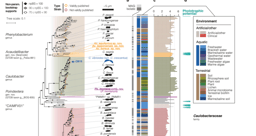
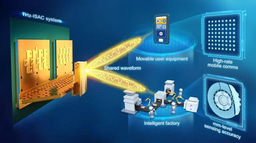
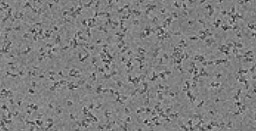
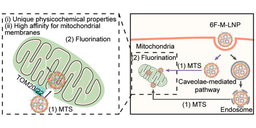

Please sign in or register for FREE
If you are a registered user on Research Communities by Springer Nature, please sign in